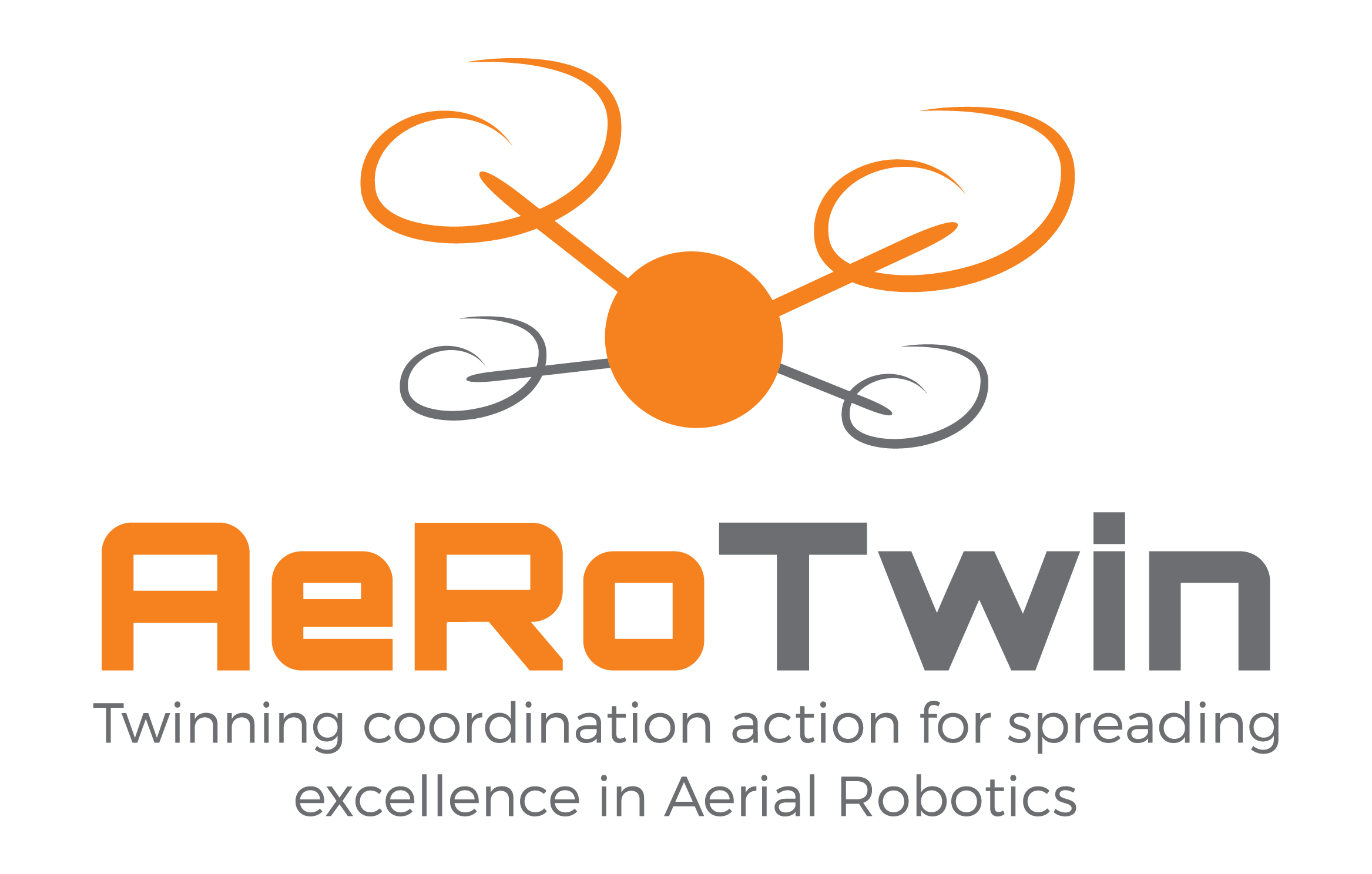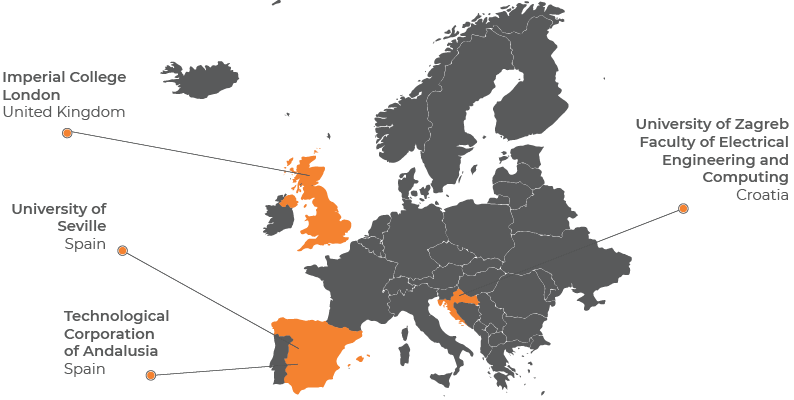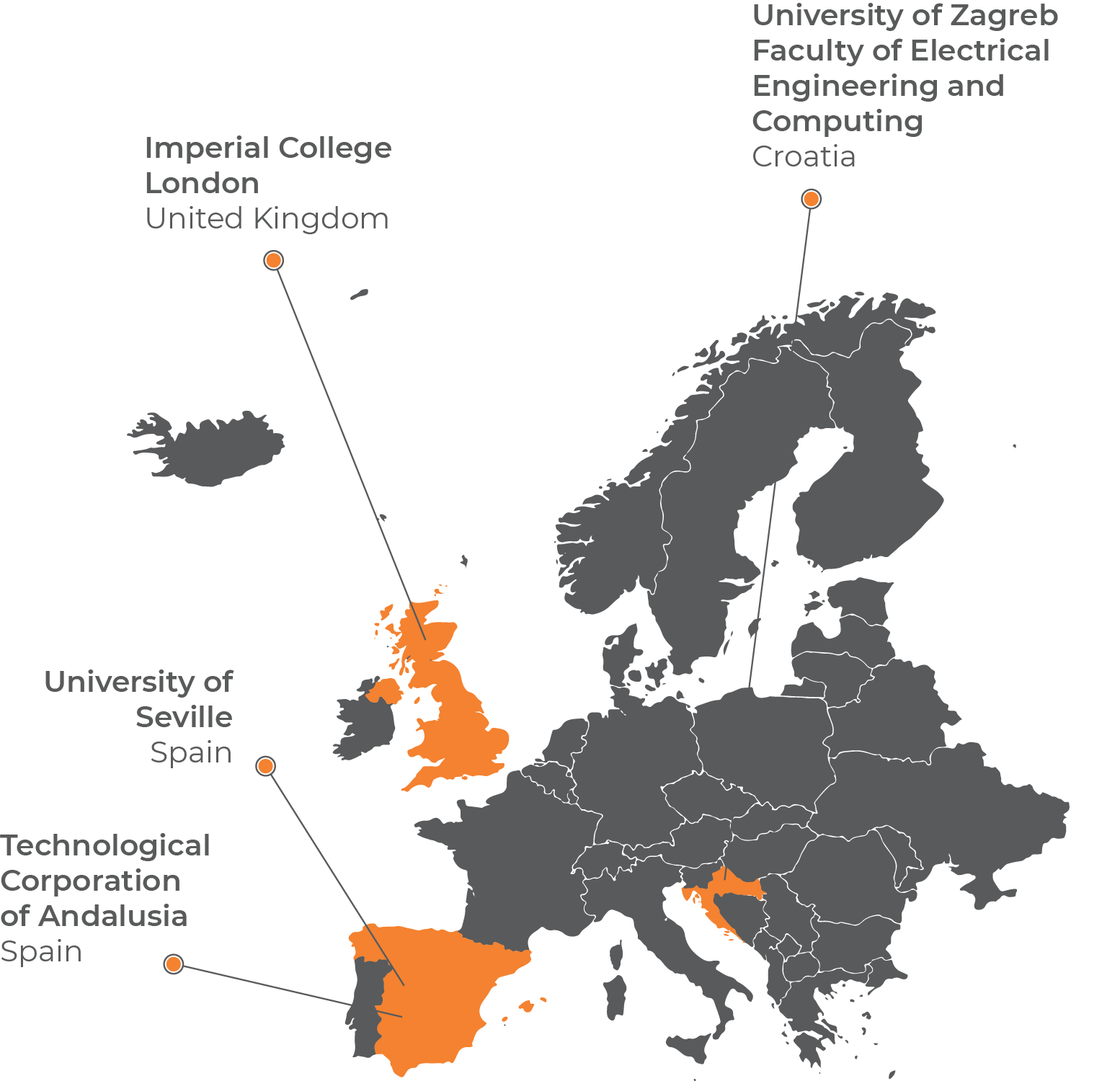 Project name: Twinning coordination action for spreading excellence in Aerial Robotics
Project name: Twinning coordination action for spreading excellence in Aerial Robotics
Project acronym: AeRoTwin
Dates: 01.09.2018 - 28.02.2022
Total budget: 997,897.50 EUR
Funding: EU Horizon 2020, CSA - Coordination and support action
Grant Agreement number: 810321
Website: https://aerotwin.fer.hr
AeRoTwin
AeRoTwin is an EU H2020 Twinning project coordinated by the Laboratory for Robotics and Intelligent Control Systems - LARICS from the University of Zagreb Faculty of Electrical Engineering and Computing (UNIZG-FER).
The overarching goal of AeRoTwin is to decrease networking gaps and deficiencies between UNIZG-FER and internationally leading counterparts in EU, by significantly enhancing the S&T capacity of LARICS at UNIZG-FER in the field of aerial robotics. Through carefully planned twinning actions, AeRoTwin will raise the UNIZG-FER research profile, as well as the research profile of its personnel.
UNIZG‐FER will through AeRoTwin enhance its networking capacity and scientific visibility; improve the quality of innovation management and technology transfer; and also increase its research excellence and innovation capacity in the field of aerial robotics, in the following Strategic Research Domains (SRDs):
- Cooperative robotic missions
- Aerial robot navigation
- Aerial robot configurability
Partners:
- University of Seville (USE), Spain
- Imperial College London, UK
- Technological Corporation of Andalusia, Spain
The paper titled Centroid vectoring control using aerial manipulator: Experimental results was presented by Antun Ivanović at the international conference IEEE International Conference on Unmanned Aircraft Systems within projects Specularia and AeRoTwin. The conference was held 11-14 June 2019 in Atlanta, USA.
This paper addresses the issues of aerial manipulation and its dynamic center of mass variations by deriving a control principle capable of exploiting this disturbance as a means to stabilize the UAV. The UAV utilizes both rotors variations and centroid vectoring for attitude control and the control structure was further augmented with position control. The main focus is on experimental validation of the system.




